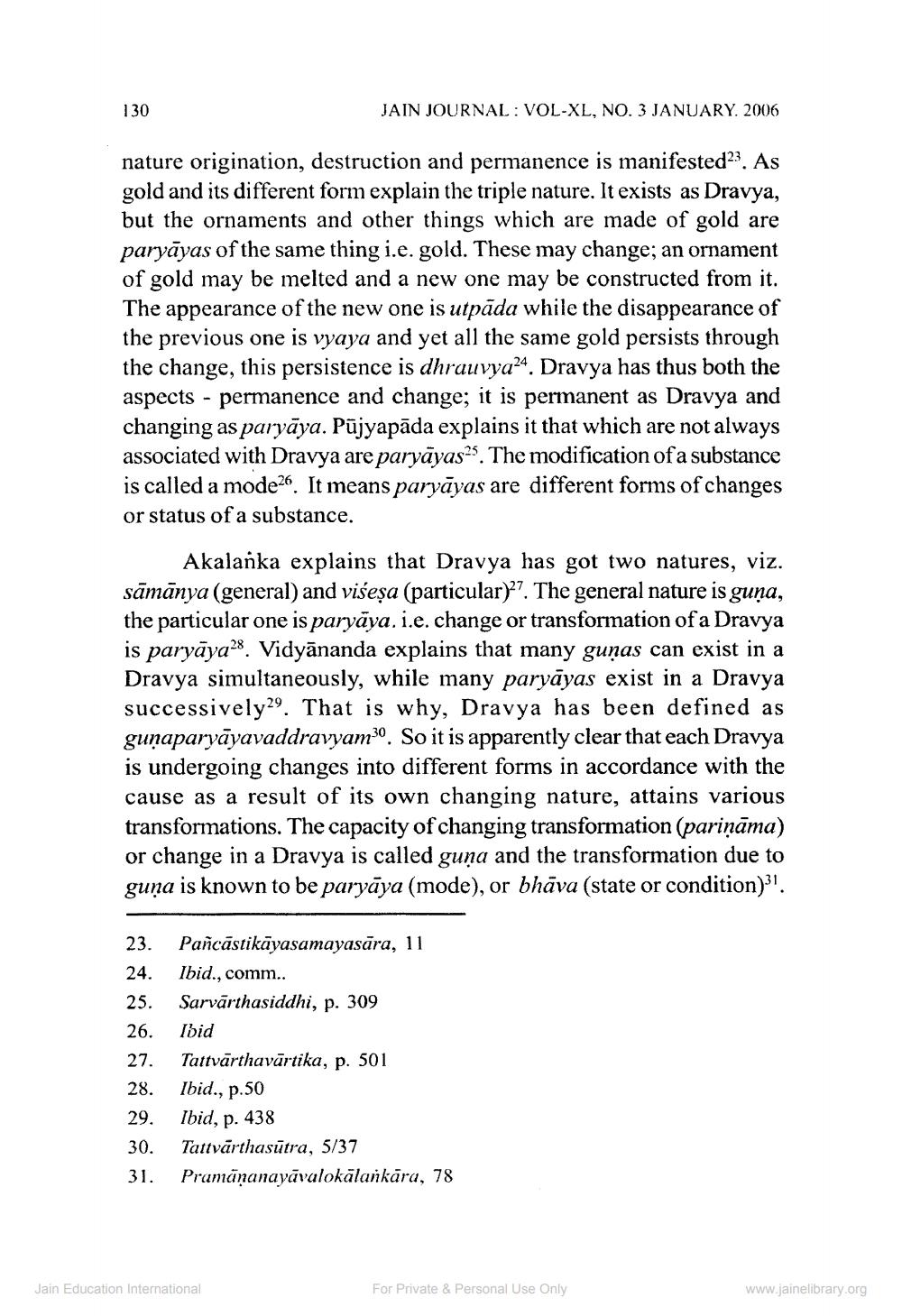________________
130
JAIN JOURNAL: VOL-XL, NO. 3 JANUARY 2006
nature origination, destruction and permanence is manifested?). As gold and its different form explain the triple nature. It exists as Dravya, but the ornaments and other things which are made of gold are paryāyas of the same thing i.e. gold. These may change; an ornament of gold may be melted and a new one may be constructed from it. The appearance of the new one is utpāda while the disappearance of the previous one is vyaya and yet all the same gold persists through the change, this persistence is dhrauvya24. Dravya has thus both the aspects - permanence and change; it is permanent as Dravya and changing as paryāya. Pūjyapāda explains it that which are not always associated with Dravya are paryāyas 5. The modification of a substance is called a mode26. It means paryāyas are different forms of changes or status of a substance.
Akalanka explains that Dravya has got two natures, viz. sāmānya (general) and višeșa (particular)". The general nature is guna, the particular one is paryāya. i.e. change or transformation of a Dravya is paryāya 8. Vidyānanda explains that many gunas can exist in a Dravya simultaneously, while many paryāyas exist in a Dravya successively29. That is why, Dravya has been defined as gunaparyāyavaddravyam. So it is apparently clear that each Dravya is undergoing changes into different forms in accordance with the cause as a result of its own changing nature, attains various transformations. The capacity of changing transformation (pariņāma) or change in a Dravya is called guna and the transformation due to guna is known to be paryāya (mode), or bhäva (state or condition))).
23. 24. 25. 26. 27. 28. 29. 30. 31.
Pancāstikāyasamayasāra, 11 Ibid., comm.. Sarvārthasiddhi, p. 309 Bid Tattvārthavārtika, p. 501 Ibid., p.50 Ibid, p. 438 Tattvārthasūtra, 5/37 Pramāṇanayāvalokālankāra, 78
Jain Education International
For Private & Personal Use Only
www.jainelibrary.org




